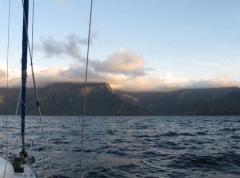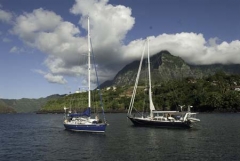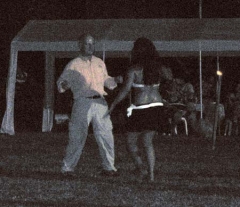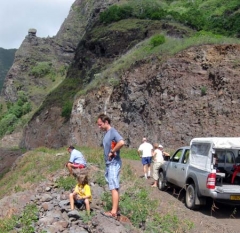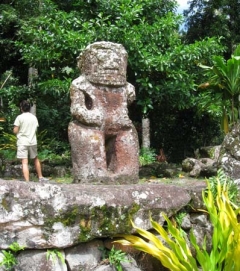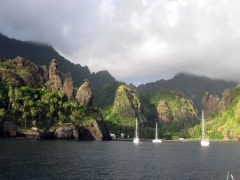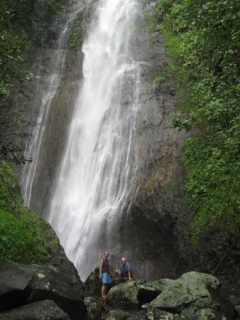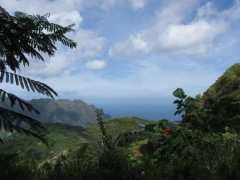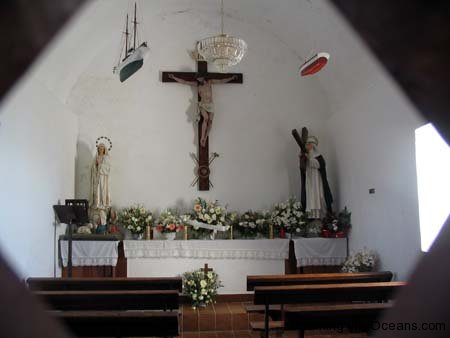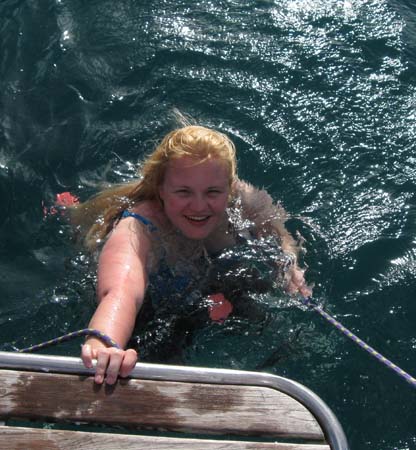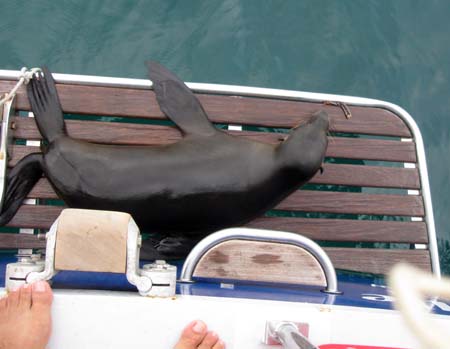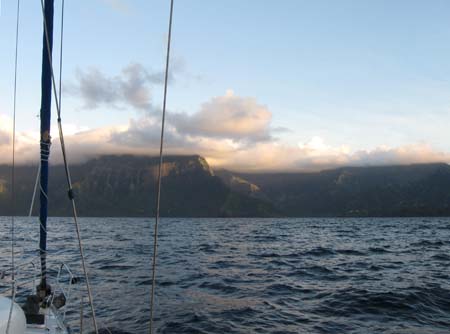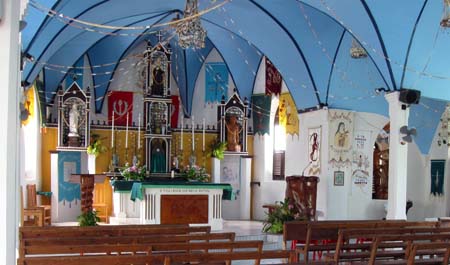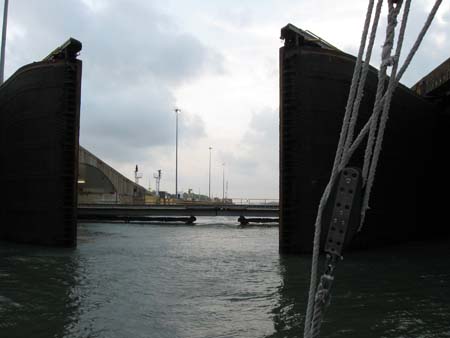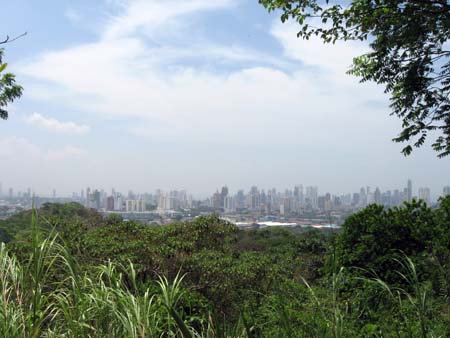Land Again you certainly can’t miss the Marquesas, (well I guess you could but with GPS it would be difficult!) the islands rise up from the sea to great heights.
Ah what a wonderful sight, land, green rising up towards the sky. Our longest passage completed (or so I’m told its our longest passage) and I’m glad to be in sight of land. Not that there was anything wrong with the 3002 miles it was just a long way and like a car journey sometimes it’s good to be over. We arrived at the anchorage first thing in the morning to a great cheer from the other already anchored boats. Some we had been chatting to on the radio on passage but had not met so that was fun. Coffee and cake was delivered to welcome us and the usual passing of local information. The local police would be there till lunch time otherwise we would have to wait till Monday. Up to the village to sign in, have a look around, extract some money French Polynesian Francs, from the hole in the wall, which shot out in 10,000 franc notes, (about £100 note) and to explore. Luckily we were passing the only lunch stop at the right time, lunch was good!
Following day was wash day for me, there is only so much you can do on passage, so a bag was taken ashore to the tiled wash area, then I started chatting to some local folk, they insisted that they take me to their house where they have a washing machine. Two hours later I was back on the quay, laundry done and an enormous box of fruit all from their garden, pomplemousse, avocados, limes, coconut, and mangoes. They lived up the valley a little way, modern house, with no glass in the windows, don’t need windows! Pigs and hens, goats, kittens and dogs all running around their large garden. They were so happy to share their home and produce with me, it was really good. They even offered me a kitten. I declined!
Three boats including ourselves hired a taxi to take us to the other side of the island, where there are five huge stone tikis, it was a long drive up and down the very bumpy tracks to Puama’u, but well worth it, for the views were stunning. The village of Atuona, houses the Gaugin museum, rather than original works there were painted copies of his works, sometimes multiple copies of one painting but by different artists, which was an interesting idea.
Fatu Hiva is about forty miles south east of Hiva Oa, and we had a bumpy sail down there, we left at lunchtime knowing that if we didn’t leave then with the wind getting stronger our passage the next day would have been rougher. Arrival at Hanavave was at midnight, but the bay is open and we anchored outside the other boats under a fullish moon. The wind did increase and gusts rolled down the valley but with two anchors out from the bow we were snug. The waterfall here is a suggested walk, and with all the rain was very dramatic. Route was to follow the road till it became just a rough track, turn left through the farmyard over the stream, which was now a river, and over the boulders to the falls. You can swim in the pool but there was a lot of branches etc falling so seemed unwise. We met the carvers who produced tikis, bone carvings and taro for the cruise ship passengers. One of our friends bartered for a wooden carved letter opener, seemed to me like a better deal. Although, the young locals basically want alchohol they will accept other things, rope sunglasses, batteries soap etc. We walked up the track towards the next village, up and up we went, again was well worth the effort. Lunch table provided at the top, the track was very quiet we only had two 4x4s all day. We spoke to the local teacher, who has the children from age three to ten they then go off to one of the bigger islands for high school, then Papeete for college and some go on to France for University. Quite a young age to have to leave home, but that’s the way it is. They don’t all return, having tasted a different life style on the big island, also jobs are limited, not so different from Scottish islands.
From Fatu Hiva to Tahuata here we anchored in an uninhabited sandy bay, where the limes fall off the trees and roll into our bags. Again we walk, up and over, people here seem much friendlier, we look at bone carvings, the drying copra, and a plantation of nonis (a green pear sized fruit with round whitish markings, shipped to Papeete in barrels, fermenting, then shipped to Utah where it is mixed with various juices, very popular at one time as a cure all, fallen from favour lately)

